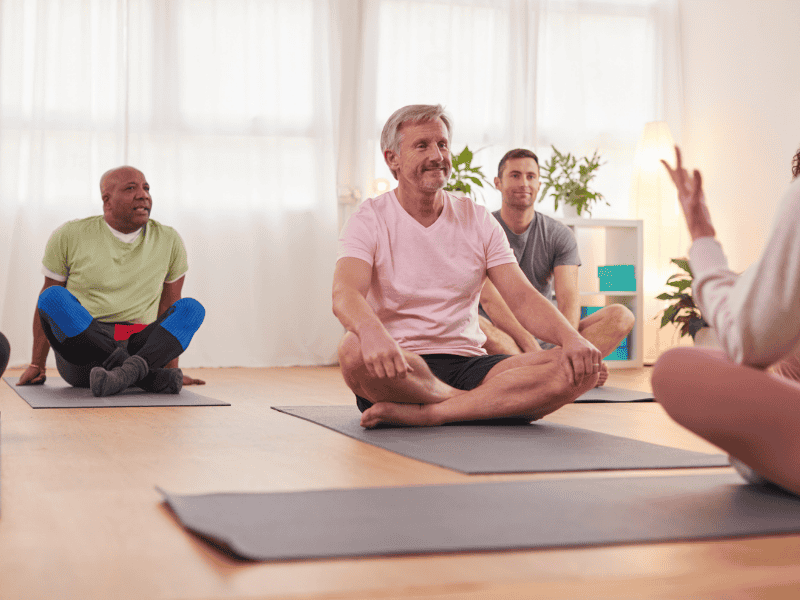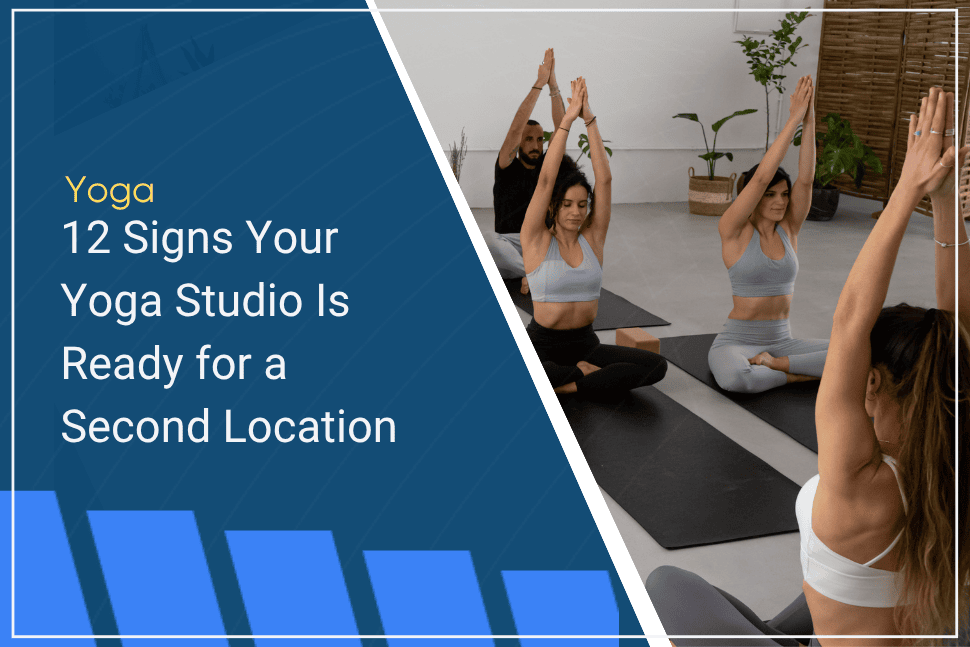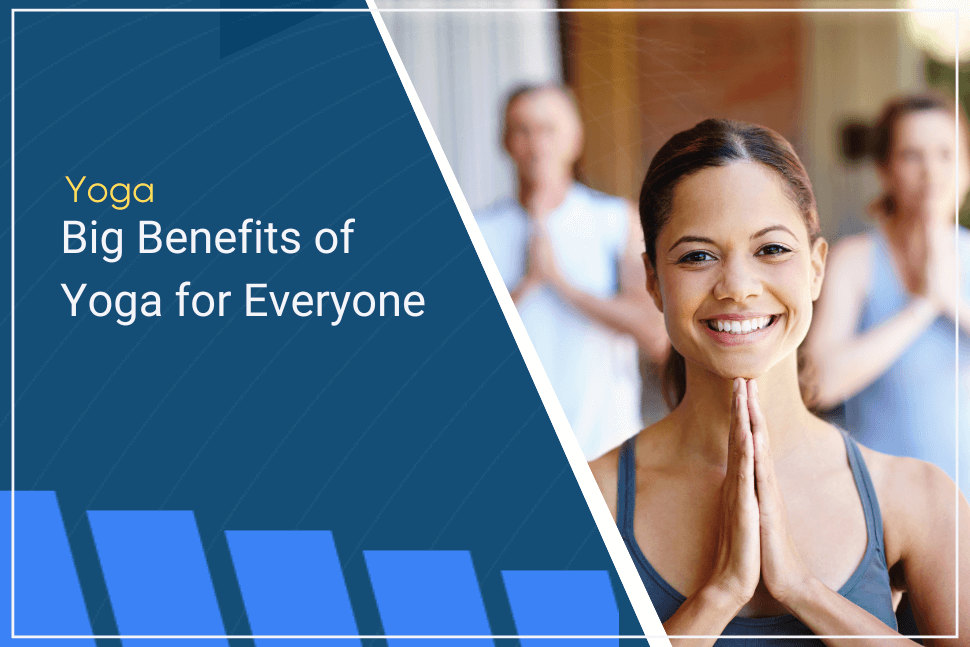Ancient wisdom in a modern world. You love yoga, but you’re looking for new ways to experience this centuries-old practice.
In 2025, several trends are reshaping how people practice yoga. It’s more dynamic than ever, from the rise of virtual classes and AI-driven personalized practices to the increasing focus on mental health and inclusivity.
Here are some of the key trends to watch this year.
Virtual Reality Yoga Retreats
Yoga retreats have been popular for decades, allowing practitioners to escape their everyday lives to a place of tranquility and rejuvenation. Still, these retreats are expensive, putting them out of reach for many people. Virtual reality retreats make the experience accessible to the masses.
With the benefit of a virtual reality headset, attendees are immersed in a peaceful environment that simulates a backdrop of the Himalayas or a serene beach without leaving their front door. These VR retreats provide all the energy, camaraderie, instruction, and benefits of an in-person yoga workshop at a fraction of the cost.
As a proactive studio owner, you can leverage the VR retreat trend by investing in virtual reality equipment and collaborating with a content creator. This strategic move will allow you to develop immersive, high-quality virtual environments and yoga sessions, enhancing your studio’s offerings and attracting a wider audience.
Partnering with experienced yoga instructors to guide these virtual sessions will also ensure that your clients receive the same level of expert instruction and engagement they would expect from an in-person retreat.
Fusion Yoga Styles
Fusion yoga blends traditional yoga with other forms of exercise, such as martial arts, Pilates, strength training, and dance. These classes are opening yoga to a whole new audience of people who have traditionally not considered this form of exercise beneficial to them. It’s also ideal for people who want to meet a range of fitness goals, such as increasing flexibility, strength, and cardio endurance, but don’t have the time to take many different classes.
For instance, fusion yoga presents an exciting opportunity to appeal to a broader audience of potential members. By working with fitness professionals from other disciplines, such as personal trainers, martial arts instructors, and Pilates instructors, you can design classes that combine the best of both worlds. This innovative approach not only diversifies your offerings but also attracts new members who may not have considered traditional yoga beneficial to them.
Introduce the concept of fusion yoga to martial arts schools, dance, and Pilates studios by arranging to travel to their locations and speak to their members after a class. Offer free trial sessions so they can get a taste of how your classes will improve their fitness and skills in their discipline.
Actively seek member feedback to develop and refine your hybrid classes to be as beneficial and appealing as possible.
AI and Personalized Yoga
Artificial Intelligence is revolutionizing almost every aspect of our lives, and yoga is no exception. AI-driven apps and platforms allow users to develop customized experiences built around their unique goals, needs, and preferences. These platforms can offer highly personalized sessions by analyzing fitness levels, flexibility, and biometric feedback.
One advantage of AI-based platforms is that they can assess the user’s performance in real-time, offering immediate feedback and corrective suggestions. This ensures that each session is challenging at the user’s level, promoting gradual progression and reducing the risk of injury.
Embracing AI technology can set you apart as an innovative, cutting-edge studio operator. Invest in AI-driven platforms to provide a personalized experience for your students. These tools can range from advanced yoga apps to interactive screens that guide users through customized routines.
You can even go a step further by collaborating with tech companies specializing in AI to develop bespoke solutions tailored to your studio’s needs. This could involve creating a branded app that offers personalized yoga sessions to your clients.
Develop packages that combine in-person classes with AI-assisted sessions. That way, your members will benefit from AI-generated precision and feedback without losing the personal touch of a real instructor.
Introducing AI-based platforms to your students will involve an education process. Host workshops and seminars to educate your students about the benefits of AI in yoga. Demonstrate how these tools work and how they can enhance their practice.
Adapted Yoga
Yoga has become more accessible to groups that previously could not access it due to physical or other limitations. Chief among them is the senior population.
Many older folks have mobility and balance issues that stop them from doing traditional floor-based or free-standing yoga postures and flows. Chair yoga offers a solution for them, allowing them to perform modified versions of postures and flows that can be done while sitting in a chair. The chair can also be used as a support for standing postures, along with props like yoga blocks.

Yoga classes specifically designed for pregnant or nursing women are another example of how classes are becoming more accessible to a broader population.
As a studio owner, you should make your services available to as wide an audience as possible. Offer chair yoga sessions, both in the studio and through virtual classes. Market these classes to retirement facilities, offering complimentary sessions and group discounts. Include classes to cater specifically to new and expectant moms, ensuring that your instructors are well-trained to meet the needs of this market niche.
You must also ensure that your studio is accessible to people with diverse needs, including wheelchair-bound people.
Mental Health Integration
There is a strong connection between yoga and mental health, with its ability to help reduce stress and anxiety being well documented. More and more studios are incorporating mental health-focused elements into their practice today.
Mindfulness techniques and meditation practices are being integrated into yoga classes to help students develop increased self-awareness and emotional regulation. There is also a trend towards therapeutic yoga, emphasizing yoga as a complementary treatment for such mental health conditions as depression, PTSD, and chronic stress. These classes often include gentle poses, breathing exercises, and guided meditation to support mental and emotional well-being.
Studios also offer mental health workshops and retreats, combining yoga, group therapy, journaling, and art therapy. Trauma-informed yoga classes are another example of mental health integration in the yoga space. These classes promote safety, empowerment, and choice to help students feel more in control.
Partnerships between mental health professionals and yoga instructors provide clients access to physical and mental health resources. Many yoga apps also include features geared toward mental health, such as guided meditations, stress-relieving techniques, and mood-tracking tools.
As a studio owner, you can leverage the mental health trend by developing classes focusing on mental health, including elements like breathwork, meditation, and poses that reduce stress and anxiety. You can also host workshops that address mental health topics, providing practical tools to manage stress and anxiety. Partner with mental health professionals to receive client referrals and build a support network for your students.
Smart Yoga Wearables
Wearable fitness technology has become huge over the last couple of years, so it’s no surprise that it has made its way into the yoga studio. One example of this is the smart yoga mat, which has cameras and sensors embedded into the mat that analyze the student’s alignment, balance, weight distribution, and biometrics, such as muscle activity, stress levels, and hydration, and then provide feedback on improvement through voice or text.
Wearable sensors such as smartwatches, fitness bands, and posture trackers monitor heart rate, breathing patterns, and movement. There are also posture-correcting wearables that provide reminders of vibrations when the wearer is out of alignment.
Wearable technology often syncs with yoga and fitness apps so that the wearer can track their progress, set goals, and receive tailored recommendations based on performance data.
As a studio owner, you can leverage smart yoga wearables to enhance your offerings and attract tech-savvy clients. Host workshops to educate your students about the benefits of using smart yoga wearables. Purchase smart mats to use in classes so students can experience the benefits first-hand during classes. You could even offer rental options for those who want to try before they buy.
Investigate the possibility of collaborating with technology companies to offer your members exclusive discounts or special offers on wearables. This can add value to your membership packages. You should also highlight the benefits of smart wearables in your marketing materials, showcasing how they can improve alignment, track progress, and support overall wellness. This will potentially attract new members attuned to wearable integration’s benefits.
Sustainable & Eco-Friendly Practices
From its very beginning, yoga has emphasized harmony with nature. That aspect is being emphasized with eco-friendly practices that emphasize sustainability and protection of the environment.
Eco-friendly yoga mats are constructed from sustainable materials such as natural rubber, cork, and jute. They are biodegradable and free from harmful chemicals. You can also buy props and accessories like blocks, straps, and bolsters made from recycled or organic materials.
Many studios are promoting themselves as zero-waste facilities that eliminate single-use plastics, encourage reusable water bottles, and offer eco-friendly amenities. Energy-efficient practices such as using LED lighting, solar panels, and energy-efficient heating and cooling systems are also utilized. These practices reduce the studio’s carbon footprint and bring down operating costs.
Certifications from organizations like Green Business Certification Inc. (GBCI) and the U.S. Green Building Council (USGBC) can enhance a studio’s credibility and appeal.
Eco-friendly clothing, such as those made from organic cotton, bamboo, and recycled materials, and brands that follow ethical manufacturing and fair trade practices are also popular.
As a studio owner, you can lead the way in promoting sustainable and eco-friendly practices. Choose eco-friendly mats, props, and cleaning supplies for your studio. Support brands that prioritize sustainability and fair trade. Host workshops and classes on sustainability, teaching your members about eco-friendly practices and how they can incorporate them into their daily lives.
Yoga Nidra
Sleep deprivation is a huge problem in modern society. According to a 2016 study, one in three Americans get fewer than the recommended minimum of seven hours of sleep per night. The cumulative effects of lack of sleep include fatigue, mental fog, reduced reaction time, and difficulty making decisions. [1]
Yoga Nidra, or yogic sleep, has become popular to help people with difficulty getting to sleep. It involves guided meditations and body-scanning techniques to promote deep relaxation and restorative rest.
These sessions usually begin with a guided meditation to help students focus their minds and release stress. This encourages conscious relaxation to help the person drift to sleep. The instructor will also guide the student through a systematic body scan to bring attention to different parts of the body. This helps to release physical tension and bring on deep relaxation.
Breath awareness is another essential part of yoga nidra. Slowing down and focusing on the breath activates the parasympathetic nervous system, which regulates the body’s rest and digest functions. This helps reduce worry, making it easier to get to sleep.
As a studio owner, you can integrate Yoga Nidra into your offerings to support your clients’ sleep health. Schedule regular classes in the evenings to help your students wind down and prepare for sleep. Provide virtual sessions so that they can access the class from home immediately before retiring. You might also consider hosting workshops and retreats focused on Yoga Nidra and sleep health.
Conclusion
The eight yoga trends we’ve explored show that this ancient practice is a living, breathing entity, evolving with the times to become ever more relevant. As a studio owner, you’re at the coal face of this exciting transformation, with a unique opportunity to shape the future of yoga in your community.
By embracing these trending yoga opportunities – virtual reality retreats, AI-driven personalization, mental health integration, smart yoga wearables, fusion yoga styles, sustainable practices, and Yoga Nidra—you can enhance your studio’s offerings and meet the diverse needs of modern yogis. Staying attuned to these developments keeps your practice current and attracts a broader audience, fostering a more inclusive and supportive environment.
References
[1] Liu Y, Wheaton AG, Chapman DP, Cunningham TJ, Lu H, Croft JB. Prevalence of Healthy Sleep Duration among Adults–United States, 2014. MMWR Morb Mortal Wkly Rep. 2016 Feb 19;65(6):137-41. doi: 10.15585/mmwr.mm6506a1. PMID: 26890214.
 Gym Owner Statistics: The State of Gyms, Member Trends, and Usage Data
Gym Owner Statistics: The State of Gyms, Member Trends, and Usage Data




 EN (English)
EN (English)
 JA (日本語)
JA (日本語)